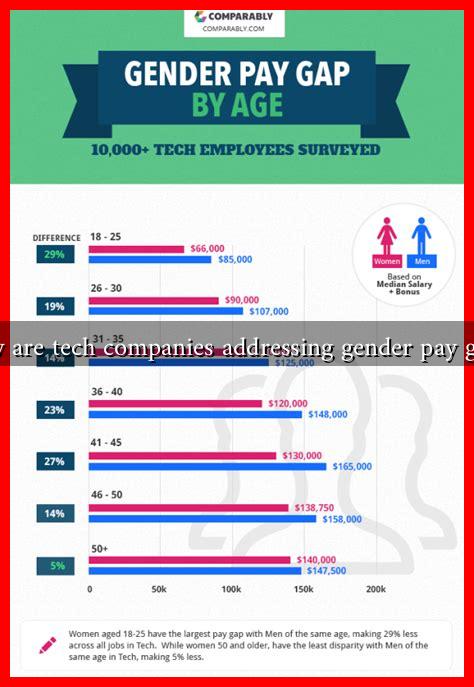-
Table of Contents
How Are Tech Companies Addressing Gender Pay Gaps?
The gender pay gap remains a significant issue across various industries, with the tech sector being no exception. Despite the industry’s reputation for innovation and progressiveness, women in technology often earn less than their male counterparts. However, many tech companies are taking proactive steps to address this disparity. This article explores how these companies are tackling the gender pay gap through transparency, policy changes, and innovative practices.
The Current State of the Gender Pay Gap in Tech
According to a report by the National Center for Women & Information Technology (NCWIT), women in computing occupations earn about 83% of what their male colleagues make. This gap is even wider for women of color, with Black women earning only 63% and Hispanic women earning 54% of what white men earn in similar roles. These statistics highlight the urgent need for tech companies to address pay equity.
Transparency as a Tool for Change
One of the most effective strategies tech companies are employing to combat the gender pay gap is transparency. By openly sharing salary data, companies can hold themselves accountable and foster a culture of fairness. Here are some notable examples:
- Salesforce: In 2016, Salesforce conducted a comprehensive audit of its pay practices and invested $3 million to address pay disparities. The company continues to perform annual audits to ensure ongoing equity.
- Buffer: Buffer has been a pioneer in salary transparency, publishing its salary formula and individual salaries on its website. This openness has helped the company maintain equitable pay across genders.
- Google: Google has committed to regular pay equity analyses and has made its findings public. The company has also implemented a policy to ensure that all job offers are based on market rates rather than individual negotiation.
Policy Changes and Initiatives
In addition to transparency, many tech companies are revising their policies to promote gender equity. These initiatives often include:
- Standardized Pay Structures: Companies like Microsoft have adopted standardized pay structures to minimize bias in salary negotiations and ensure that employees are compensated fairly based on their roles and experience.
- Bias Training: Organizations such as Facebook and LinkedIn have implemented bias training programs for hiring managers and HR personnel to reduce unconscious bias in recruitment and promotion processes.
- Flexible Work Policies: Companies are increasingly recognizing the importance of work-life balance, particularly for women who often bear a disproportionate share of caregiving responsibilities. Flexible work arrangements can help retain female talent.
Innovative Practices and Programs
Beyond policy changes, tech companies are also introducing innovative practices to support gender equity:
- Mentorship Programs: Companies like IBM have established mentorship programs aimed at supporting women in tech. These programs connect female employees with senior leaders who can provide guidance and career development opportunities.
- Employee Resource Groups (ERGs): Many tech firms have created ERGs focused on women in the workplace. These groups provide a platform for networking, support, and advocacy for gender equity initiatives.
- Parental Leave Policies: Companies such as Netflix have implemented generous parental leave policies that encourage both parents to take time off, promoting a more equitable division of caregiving responsibilities.
Measuring Success and Future Directions
While many tech companies are making strides in addressing the gender pay gap, measuring success is crucial. Regular audits, employee surveys, and public reporting can help track progress and identify areas for improvement. Furthermore, as the conversation around gender equity evolves, companies must remain adaptable and committed to continuous improvement.
Conclusion
The gender pay gap in the tech industry is a complex issue that requires a multifaceted approach. Through transparency, policy changes, and innovative practices, tech companies are making significant strides toward achieving pay equity. While challenges remain, the commitment of these organizations to address the gender pay gap is a positive step forward. As more companies adopt these practices, the hope is that the tech industry will become a model for gender equity in the workplace.
For more information on gender pay equity initiatives, you can visit NCWIT.

